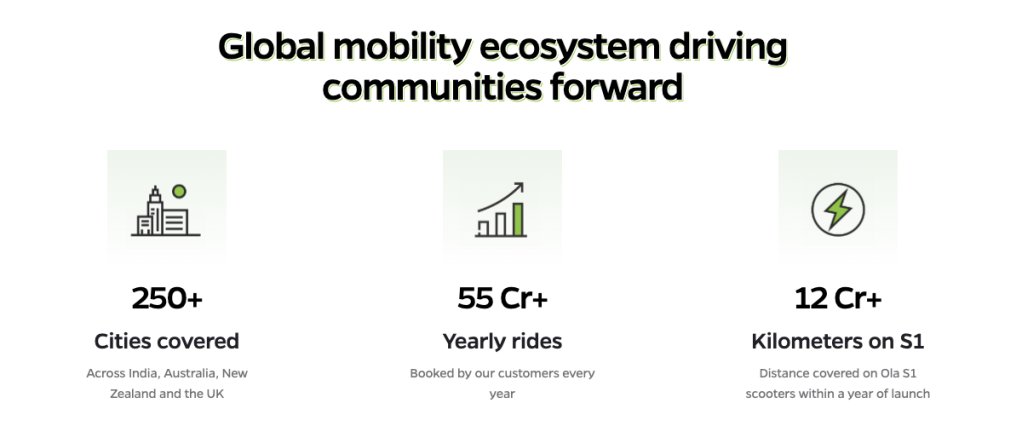The product life cycle is the journey a product takes from ideation and development to the time it’s removed from the market. It’s a method for dividing the life of a product from its beginning to its eventual end.
Growing a business would be easy if you could place a product on a supermarket shelf and watch as it generated consistent sales for eternity. But as you know, it’s rarely that straightforward.
Products come and go. Inventions that were once the bee’s knees grow outdated and get replaced by new technological advancements and hungry competitors. The same market trends and consumer preferences that made a product viral overnight can also cause its rapid decline.
The product life cycle lets companies make sense of this journey. They can then use this knowledge to make more informed decisions, tailor their strategies, invest in the right areas, and decide on the next best steps.
What are the different stages of the product life cycle?
The product lifecycle tracks the trajectory of most products, and consists of six stages: development, introduction, growth, maturity, saturation, and decline.
Understanding these stages helps you decide on the best strategy for your product at any given point in time.
Let’s break down each stage one by one. Along the way, I’ll discuss key considerations, risks, and best practices.
1. Development stage
Every product starts with an idea that needs to be fleshed out. For most modern businesses, this is the process of research and development (R&D). It involves determining which product you want to create based on market research and your understanding of your target market.
There are several steps involved when taking a product from ideation to launch-ready. While it’s always a unique journey for every business, it generally looks something like this.
| Step | Description |
| 1. Identifying a potential product. | Addressing a consumer need. |
| 2. Researching market trends and competitors. | Validating the idea. |
| 3. Performing concept testing. | Gathering feedback from real consumers. |
| 4. Developing product concepts and prototypes. | Creating initial designs. |
| 5. Testing prototypes in context. | Refining the concept based on practical testing. |
| 6. Iterating and improving the product. | Creating a finished version through continuous improvement. |
| 7. Securing investment and planning supply chains. | Preparing for the product launch. |
| 8. Releasing the product to a limited market. | Testing the product in a controlled environment. |
The R&D stage can be a long, bumpy road because the steps won’t necessarily be linear. Testing, refining, and iterating can take weeks, months, or even years, depending on your research and the complexity of your product.
Customer feedback is key during your product’s development phase, but you also need to set a timeline, especially since you won’t be driving revenue at this stage.
2. Introduction stage
Once you have a final product, it’s time to launch it in the market. This is the ‘introduction’ stage, which is characterised by low sales volume, limited product adoption, and slowly increasing demand. At this point, marketing becomes your best friend. You need to build brand awareness and introduce your product to consumers.
Your strategy will differ depending on the market. If competition is low at this stage, you should focus on getting consumers to understand your product and how it meets their needs. If you’re already entering a market with established competition, you’ll need to invest a lot of time in product differentiation to get consumers to switch from their existing product preferences.
Your goal here is to make early sales and get your foot in the door against any competition. Here are some common tactics you can use during this crucial period.
Build excitement
During this early stage, demand doesn’t come for free. It needs to be manufactured. How long this process takes depends on your product’s complexity and uniqueness and how well it aligns with your target audience’s needs.
Craft compelling campaigns that create buzz and spark curiosity. You need to make consumers see why your product could be a solution to their problem. If you’re entering an established market, you’ll also need to show your consumers how your product differs from the competition.
Take an omnichannel approach
Don’t limit yourself to one form of marketing. Build a website and create blogs around relevant topics. Use social media and influencer marketing to reach a wider audience. Consider paid advertisements to spread the word. The more channels you use, the easier it will be to capture the vital few initial customers.
Price strategically
Align your pricing strategy with your product positioning and marketing efforts. Undercutting competition based on competitor analysis could be a smart move, but if you’re trying to appear as a luxury, superior product, this could send the wrong message to consumers.
Prioritise customer satisfaction
Word-of-mouth recommendations from early adopters are golddust at the introduction stage. Prioritise creating personalised, engaging customer experiences to capture this audience. The more you can show consumers that you’re a trustworthy, authentic brand, the more likely they’ll be to recommend your product to others.
Once you’ve begun your marketing campaigns, you need to refine them. Take stock of customer feedback and sentiment, and use this to improve as you progress.
This is the stage where most businesses falter. Few things are more filled with hazards and littered with unexpected costs than an initial product launch. Ride the wave and be prepared to reinvest your revenue. At this point, you’ll succeed if you can tread water, break-even, and continually iterate until you reach the growth stage.
Product life cycle example at the introduction stage
Examples of products currently in the introduction phase include:
- Lab-grown meat products.
- Augmented reality (AR) glasses.
- Self-driving cars.
3. Growth stage
Once customers have accepted the product and you’ve begun to gain traction, you’ve entered the growth phase. This stage is characterised by rapid sales growth and a steady increase in revenue.
Marketing is slightly easier in this stage because customers are already familiar with your product. However, you’ll need to shift goals and focus more heavily on market expansion. There are several ways you can achieve this:
- Market expansion: Entering into new market segments and demographics based on ongoing research.
- Marketing strategy: Changing your growth stage marketing strategy to focus on product preference rather than product awareness.
- Distribution: Expanding your distribution channels to expand product availability.
- Retention: Implementing loyalty and referral programs to encourage customer retention and loyalty.
You’ll need to reinvest much of the profits at the early growth stage to scale up your operation. The challenge is scaling effectively without stretching your resources too thin. You’re gaining momentum, but if you can’t keep up with demand, your upward trajectory might not last for long.
At this point, you may also start to see emerging competitors as other organisations try to take their slice of the market. As such, highlight your product’s unique value proposition and stay one step ahead by iterating and improving your product design.
Product life cycle example at the growth stage
Some examples of products currently at the growth product life cycle stage include:
- AI tools and large language models (LLMs).
- Electric vehicles.
- Fitness trackers.
4. Maturity stage
At the product maturity stage, sales have begun to level out from the growth stage; however, costs are declining, so profits remain strong. At this point, you’re maximising your product and seeing the largest returns. This is the ‘golden phase’ that businesses want to maintain for as long as possible.
You’ll also find you’re putting in more work to fend off the competition and keep your product offering fresh. The market at this stage will be growing increasingly saturated, so your priority should be introducing new product features to differentiate from your new competitors.
There are a few approaches to take to maximise your time at the top.
Competitive pricing
At this point, most businesses will have developed their manufacturing and production processes enough to achieve economies of scale. This means they can lower the price of the finished product without significantly impacting company profit margins.
Hone in on your unique value proposition
You need to reiterate why your product differs from every alternative on the market.
- What makes you unique? Perhaps your product has better features than your competition. Maybe you create your products sustainably.
- Or is it that you offer superior customer service? Focus on what you do best and use that to stand out.
Encourage long-term loyalty
Your customer base is already familiar with your brand. You have a dedicated fanbase, but will this loyalty last if a competitor ups their game? Prioritise nurturing your existing bonds and exceeding customer expectations through exclusive content and loyalty programs.
Establish feedback loops
It is important to develop a feedback loop between your customers and your development team. Understanding what your audience really wants will help you extend your time in the maturity stage and show your customers that you take their suggestions seriously.
Product life cycle example at the maturity stage
Examples of products currently at the maturity stage include:
- Smartphones.
- Laptops.
- Streaming services.
5. Saturation stage
During the saturation stage, profits will truly level out as competitors begin taking their market slice. Sales aren’t declining yet, but they aren’t growing either. The market is so filled with options that consumers have too much choice, making it much harder for your product to continue growing.
There are two possible outcomes during this stage. The first is that your product eventually enters a market decline. The second is that you become consumers’ brand preference and revitalise interest.
The good news at the market saturation stage is that your business efficiency has reached its apex, and you have more data than ever before. You should use this to decide on the best way forward. You could decide on one or more of these approaches:
Continue to iterate your product
Try to breathe new life into your product. Create a new version with added features, or offer new deals to add value to your offering. For instance, an extended warranty, a complementary service, or an exclusive community can all set you apart from the competition. At this stage, you can usually afford to offer more value than your newer competitors. Leverage this to remain at the top for longer.
Be novel with your marketing
One of the most effective ways to maintain your product longevity is to be unique and innovative with your marketing. Spark curiosity with your messaging, tell stories, or try out a guerilla marketing tactic. You can also build a connection with your audience through social media with humorous content and authentic interactions.
Explore new R&D opportunities
Consider investing in product line extensions. Consider complementary products and accessories. Diversifying your brand will add value to your portfolio and even extend the product life cycle.
In an ideal world, you’d love to produce a superior product to your competitors forever more, but this becomes much harder in the saturation stage. To counteract this, focus on building emotional connections with consumers through exceptional service, consistency, and reliability.
Product life cycle example at the saturation stage
Examples of products currently at the saturation stage include:
- Gas-powered cars.
- Digital cameras.
- Soft drinks.
- Breakfast cereals.
6. Decline stage
No product lasts forever. The decline stages involve a decrease in sales and a reduction in profits. This can happen for several reasons:
- A new, high-tech invention replaces an outdated product. Think mobile phones replacing the pager.
- Changes in tastes, lifestyle habits, and consumer preferences.
- Economic forces, such as recessions or inflation.
Usually, brands will either decide to invest in rejuvenating the product or pull the plug and discontinue it. Some businesses can sit in the declining phase for years, with several long plateaus along the way. However, it’s important to regularly reassess to determine if holding strong is the best course of action.
Let’s elaborate on the different strategies available to you at this stage:
- Relying on your brand: If you have a strong brand, you can use innovative marketing strategies to pull yourself out of your decline.
- Revitalisation: It’s never too late to expand into a new market or invest in a newer version of a product.
- Discontinuation: Once the marketing and production costs outweigh the potential for revenue, it may be beneficial to discontinue the product and invest in other areas.
Revitalisation is always possible, but it is rarely a long-term fix. Every product eventually declines to the point where it isn’t worth marketing, and at that point, it will reach the end of its life cycle.
Product life cycle example at the decline stage
Examples of goods at the decline stage of the product life cycle include:
- DVD players.
- Flip phones.
- Desktop computers.
- Landline phones.
Benefits of using the product life cycle
When used correctly, the product life cycle offers a wealth of benefits.
1. Improved decision-making
The product life cycle can help you determine the best strategies for each stage. It offers a guideline that helps businesses decide at the right time.
2. Enhanced planning
The product life cycle allows businesses to ‘beat the curve’ proactively rather than responding to market changes. If a company knows its primary market will soon become saturated, it can use this to stay one step ahead.
3. Optimised resource allocation
This also allows for better resource allocation. Companies can push and pull investment in different areas, like marketing, sales, and R&D, based on the stage of the product life cycle that they’re in.
4. Maximising profitability
Ultimately, the product life cycle allows companies to optimise product management at every stage. It ensures companies capitalise on their most profitable opportunities and discontinue products before costs exceed revenue.
Drawbacks of using the product life cycle
However, it isn’t a perfect system. There are also several limitations to consider.
1. Limited applicability
The product life cycle only applies to products. It doesn’t usually have a use case for brands and services. For instance, Amazon has released dozens of products — some are mature, some are new, and some have declined. But this doesn’t mean that Amazon is in one stage or another.
2. Risk of planned obsolescence
The product life cycle is a static model with planned strategies for each stage, and it can be self-fulfilling. If a business believes it’s entering a decline, it may invest more resources into other areas, such as accessories and complementary products. But if the decline was simply a temporary dip, it may be investing in the wrong areas.
3. An inconsistent model
The reality is that many businesses don’t experience the product life cycle. Around 60% will fail within their first three years of operation. This means many companies won’t experience the full benefits the system offers.
The product life cycle has many advantages but also a few drawbacks, so it’s important to combine product life cycle management with thorough market research and customer feedback to ensure the right approach in every context.
Indian produce life cycle example: Ola
Indian ride-hailing company Ola has rapidly expanded from a local taxi operator to a diverse platform offering a broad range of services. Here’s how they did it.

Market introduction stage
OlaCabs began life as a taxi aggregator in urban India. It solved a consumer problem by offering more reliable, readily available, and affordable cabs than local competitors.
Ola prioritised brand awareness through aggressive product marketing and pricing campaigns, lowering the standard fares for journeys. They also formed strategic partnerships with local taxi firms.
Market growth stage
After a lengthy introductory period, Ola prioritised market expansion to scale operations across India. It also began offering new types of transport, including Ola Mini (small cabs), Ola Auto (rickshaws) and Ola Share (carpooling).

At this stage, Uber was becoming a considerable competitor. To compete, Ola acquired rival TaxiForSure and further diversified with OlaMoney — a digital wallet.
The growth stage in the product life cycle is ideal for new ideas, expansion, and new demographics. Ola took full advantage of its popularity to carve out market authority in different niches.
Market maturity stage
Ola is now consolidating as one of the largest ride-hailing companies in India. The market is reaching saturation, with new players like Rapido scaling rapidly.

As such, Ola is continuing to diversify into new areas, such as food delivery and electric vehicles, which is allowing it to stave off decline. They also recently finalised an initial public offering (IPO) for India to safeguard future investment.
Summing up
Charting your product’s life cycle from development and introduction to saturation and decline will help you decide on the right product life cycle strategy at the right time, but it won’t provide you with the complete picture.
You also need to understand how to market your products and how to guide consumers from brand awareness to customer loyalty. Ultimately, that will be the key to growing your business and maximising your product’s time in the sun.
Salesforce Marketing Cloud can help you deploy smart, tailored campaigns across the entire product life cycle. With our platform, you can personalise content for your audience with unified data that lets you make informed business decisions.
Watch the Marketing Cloud Demo today to learn how Salesforce can catapult your product’s growth and maximise your ROI.






















